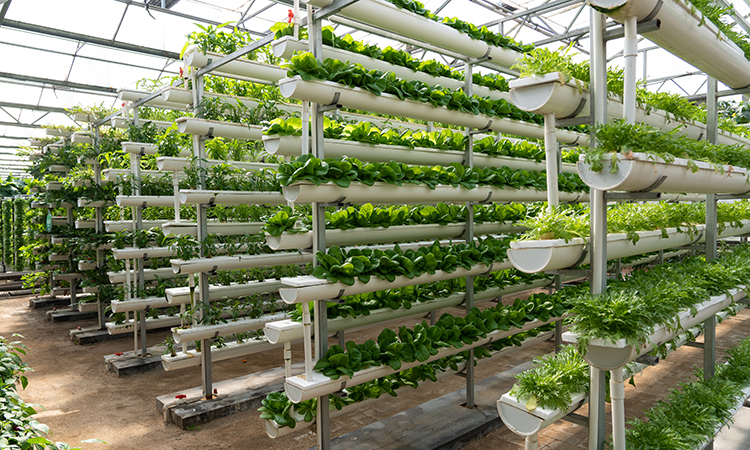Grant awarded to support the progression of hydroponic production

The grant offers the industry an opportunity to study food safety, plant pathogens and pests in hydroponics.


As controlled environment agriculture and vertical farming gain a greater foothold in modern agriculture, a new $300,000 grant aims to enhance hydroponic lettuce production.
Kristen Gibson, Director of the Arkansas Center for Food Safety and Arkansas Agricultural Experiment Station faculty member, is the lead researcher on the grant from the US Department of Agriculture’s (USDA) National Institute of Food and Agriculture (USDA-NIFA). Gibson says that the grant provides an opportunity to meet the needs of the hydroponics industry.
“The industry is always looking for what’s going to help them to grow the best product, increase profit and not cause disease,” Gibson said.
The funding comes at a time when US hydroponic production of lettuce is growing. According to a January 2024 report by the USDA, hydroponic lettuce production has more than doubled over five years, from 15.4 million pounds in 2014 to 36.4 million pounds in 2019. This rapid growth calls for a greater understanding of plant pathogens and food safety risks in these systems, Gibson said.
“It’s a growing industry,” Gibson said. “They are asking for solutions, and we’re trying to help provide them with some guidance on what we know.”
The focus of the research will be to evaluate soilless substrates as a critical point for controlling pests and pathogens. Soilless substrates serve the same function as soil in traditional agricultural systems, physically supporting the plant and acting as a medium to deliver oxygen, nutrients and water to plant roots. Some common examples of soilless substrates include volcanic rock, coconut coir, sand, perlite and vermiculite. Soilless substrates, in general, represent some of the most promising points for growers to apply an intervention to prevent pests and pathogens.
“They want to see what’s out there – what can be validated – because soilless substrates are often considered a point where some of these plant pathogens could be introduced,” Gibson added.
Gibson noted that the research will not only address pathogens that make people sick, but also pathogens and pests that make the plants sick. “If we combine strategies where you’re addressing plant pathogens at the same time as food safety, it works better,” she said.
Co-principal investigators on the project include Rupesh Kariyat, associate professor of insect-plant interactions and chemical ecology in the entomology and plant pathology department; and Ryan Dickson, assistant professor of greenhouse and controlled-environment agriculture in the horticulture department. Gibson, Kariyat and Dickson conduct research for the Arkansas Agricultural Experiment Station, the research arm of the University of Arkansas System Division of Agriculture.
Roadmap for safer hydroponic production
Gibson said that the first objective of the project is to establish the impact of soilless substrates on pathogen and pest risk. Using a controlled greenhouse environment, the research team will assess how foodborne pathogens and plant pests persist in different kinds of substrates.
“The first part is to look at a lot of the substrates that are available on the market,” Gibson said. “We want to figure out which ones are actually aiding in the proliferation or the persistence of plant pathogens, plant pests or human pathogens of concern.”
For the project’s second objective, the researchers will test the ability of different biopesticides – or non-synthetic pesticides – to control pests and pathogens in different substrates. A key part of this step is to consider the scale of commercial operations. “We can do application on a small scale, but when you think about a commercial scale, you want to figure out what’s going to make this feasible for growers,” Gibson said.
The final objective of the project is to translate the research findings from the first two objectives into best practices for hydroponic lettuce growers. Gibson said that the team will develop a set of comprehensive training materials for growers through extension activities, including workshops and training sessions with producers.
Source: newfoodmagazine.com

